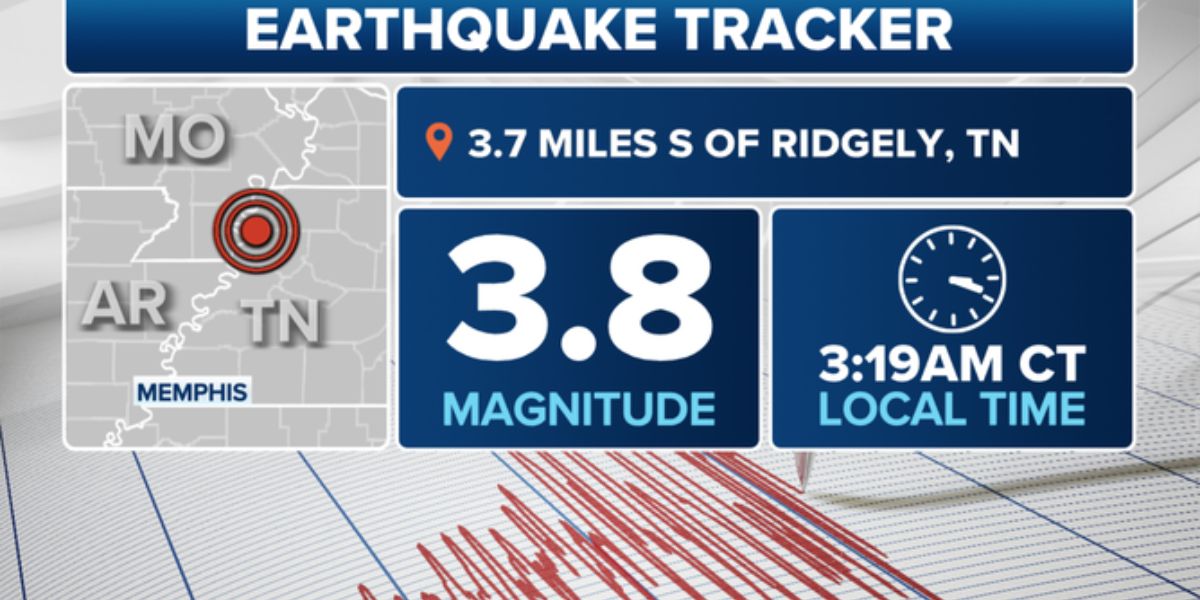Earthquake Alert! Tennessee Shaken by ‘3.8 Magnitude Quake’ in New Madrid Zone
RIDGELY, Tenn.- A 3.8 magnitude earthquake struck the New Madrid Seismic Zone in northwest Tennessee Thursday morning, felt from more than 100 miles away. While no damage was reported, the shaking served as a warning that the area was still prone to earthquakes.
According to the United States Geological Survey, the incident occurred in the community of Ridgley, which is approximately 80 miles north of Memphis.
Light to moderate shaking was felt throughout Tennessee, with reports reaching as far as Mississippi and Illinois.
The New Madrid fault zone is thought to be active, but new research has questioned whether it is capable of causing the quake that many people dread.
In 1811 and 1812, a series of earthquakes with magnitudes ranging from 7.2 to 8.2 hit the region, causing significant damage. FEMA earlier warned that a similar-strength significant earthquake along the fault line may result in “the highest economic losses due to a natural disaster in the United States.”
A federal analysis from 2004 estimated that a 7.7 magnitude earthquake would cost nearly $300 billion in damage and displace a quarter of a million people in at least half a dozen states.
The USGS estimated that a magnitude 6.0 or higher earthquake would occur during the next 50 years, but the likelihood of a recurrence of the events of the 1800s was far lower.
“Geologic research undertaken over the last 20 years have demonstrated that sequences of earthquakes of comparable size to those in 1811-1812 have occurred at least twice previously, in around 900 and 1450 AD. This implies a 500-year recurrence interval,” the authors of a USGS overview stated. Because of the region’s bedrock composition, earthquakes can be felt in an area that is approximately 20 times larger than that of a similar-sized quake in the West.
According to some seismologists, the region’s lower tendency in earthquake activity indicates that the shaking felt today is aftershocks from the 1800s catastrophe.











